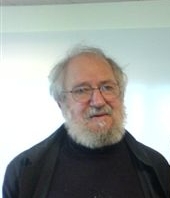TITLE: Computer Programming, Education Reform, and Changing Our Schools
AUTHOR: Eugene Wallingford
DATE: October 19, 2012 3:08 PM
DESC:
-----
BODY:
You almost can't go wrong by revisiting Seymour Papert's work every
so often. This morning I read
Why School Reform Is Impossible,
which reminds us that reform and change are different
things. When people try to "reform" education by injecting a new idea
from outside, schools seem to assimilate the reform into its own
structure, which from the perspective of the reformer blunts or rejects
the intended reform. Yet schools and our education system do change
over time, evolving as the students, culture, and other environmental
factors change.
As people such as Papert and Alan Kay have long argued, a big part of
the problem in school reform involving computers is that we misunderstand
what a computer is:
If you ask, "Which is not like the other two?" in the list "educational
movie, textbook, computer", it is pretty obvious from my perspective
that the answer must be "computer."
... not "textbook", which is how most people answer, including many
people who want to introduce more computers into the classroom.
Textbooks and movies are devices for receiving content that someone
else made. Computers are for creating content. It just so
happens that we can use them to communicate ideas in new ways, too.
This misunderstanding leads people to push computers for the wrong
reasons, or at least for reasons that miss their game-changing power.
We sometimes here that "programming is the new Latin". Papert reminds
us that the reasons we used to teach Latin in schools changed over time:
In recent times, Latin was taught in schools because it was supposed
to be good for the development of general cognitive skills. Further
back, it was taught because it was the language in which all
scholarly knowledge was expressed, and I have suggested that
computational language could come to play a similar role in relation
to quite extensive areas of knowledge.
If programming is the new Latin, it's not Latin class, circa 1960, in
which Latin taught us to be rigorous students. It's Latin class, circa
1860 or 1760 or 1560, in which Latin was the language of scholarly
activity. As we watch computing become a central part of the language
of science, communication, and even the arts and humanities, we will
realize that students need to learn to read and write code because --
without that skill -- they are left out of the future.
No child left behind, indeed.
In this essay, Paper gives a short version of his discussion in
Mindstorms
of why we teach the quadratic equation of the parabola to every school
child. He argues that its inclusion in the curriculum has more to do
with its suitability to the medium of the say -- pencil and paper --
than to intrinsic importance. I'm not too sure that's true; knowing
how parabolas and ellipses work is pretty important for understanding
the physical world. But it is certainly true that how and
when we introduce parabolas to students can change when we
have a computer and a programming language at hand.
Even at the university we encounter this collision of old and new.
Every student here must take a course in "quantitative reasoning"
before graduating. For years, that was considered to be "a math
course" by students and advisors alike. A few years ago, the CS
department introduced a new course into the area, in which students
can explores a lot of the same quantitative issues using computation
rather than pencil and paper. With software tools for modeling and
simulation, many students can approach and even begin to solve complex
problems much more quickly than they could working by hand. And it's
a lot more fun, too.
To make this work, of course, students have to learn a new programming
language and practice using it in meaningful ways. Papert likens it
to learning a natural language like French. You need to speak it and
read it. He says we would need the programming analog of "the analog
of a diverse collection of books written in French and access to
French-speaking people".
The
Scratch community
is taking at shot at this. The Scratch website offers not only a way
to download the Scratch environment and a way to view tutorials on
creating with Scratch. It also offers -- front and center, the entire
page, really -- links to shared projects and galleries. This gives
students a chance first to be inspired by other kids and then to
download and read the actual Scratch programs that enticed them. It's
a great model.
The key is to help everyone see that computers are not like
textbooks and televisions and movie projectors. As Mitch Resnick
has said:
Computers for most people are black boxes. I believe kids should
understand objects are "smart" not because they're just smart, but
because someone programmed them to be smart.
What's most important ... is that young children start to develop
a relationship with the computer where they feel they're in control.
We don't want kids to see the computer as something where they just
browse and click. We want them to see digital technologies as
something they can use to express themselves.
Don't just play with other people's products. Make your own.
Changes in the world's use of computing may do more to cause schools
to evolve in a new direction than anyone's educational reforms ever
could. Teaching children that they can be creators and not simply
consumers is a subversive first step.
~~~~
IMAGE 1: Seymour Papert at the OLPC offices in Cambridge,
Massachusetts, in 2006. Source:
Wikimedia Commons
License: Creative Commons Attribution-Share Alike 2.0.
IMAGE 2: The Scratch logo. Source:
Wikimedia Commons
License: Creative Commons Attribution-Share Alike 2.0.
-----


